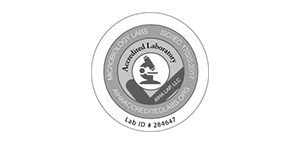How to Test For Mold Exposure
Mold is a prevalent health risk in homes. It can cause an array of ailments, from minor irritations to serious respiratory illnesses and allergies or autoimmune disorders in those susceptible.
Fortunately, testing for mold exposure is an easy way to help avoid these issues. You can do this by hiring a professional inspector or mold removal company to inspect your home or performing an easy DIY test yourself.
There are several ways to test for mold exposure, including air sampling and skin tests. Both tests are relatively inexpensive and straightforward to perform, so you may be able to pinpoint whether or not a problem exists in your home by performing either one or both of them.
If you\’re worried about the mold level in your home, an InterNACHI Certified Home Inspector can conduct a mold test for you. They\’ll take samples of air, water or other substances within your residence and send them to a laboratory for analysis; the lab then compares the indoor sample to an outdoor one to determine if your residence is affected with mold.
Mold can release volatile organic compounds (mVOCs), compounds with a musty odor which are hazardous for human health. These may lead to dizziness, fatigue, headaches and nasal irritation.
When testing your home for mold growth, one thing to look out for is humidity levels in the air. Molds require moisture in order to thrive, so a high amount of humidity could indicate that your property may be susceptible.
You should be able to tell if you have a moisture problem by looking for moldy stains on your ceiling or walls. If you observe black, green, or yellow stains that have an ethereal texture and smell like wet leaves or soil, there\’s likely that the source of the mold could be moisture related.
It\’s also wise to check for other signs of moisture, such as rotting wood and drywall. Furthermore, the ground around your house could potentially be a breeding ground for mold growth, so pay attention to how the weather outside affects it in your yard.
If you experience any of the symptoms listed above, make an appointment with a doctor immediately. They can test your blood and skin for mold toxins and provide treatments to stop the mold from growing.
Mold can present in many forms, from toxic black mold (Stachybotrys chartarum) to mildew. Mildew is not as hazardous for your health as black mold but it may still irritate you.
Black molds that produce mycotoxins, or toxic mycotoxins, can exacerbate symptoms if you already have an underlying medical condition such as asthma. They may lead to a form of mold poisoning which affects the lungs and causes coughing, wheezing and shortness of breath.
Your physician may suggest testing for mycotoxins in your blood or suggesting a skin test to see if you have an allergy to certain molds. While this type of test is more accurate than a blood draw, it\’s not guaranteed.







